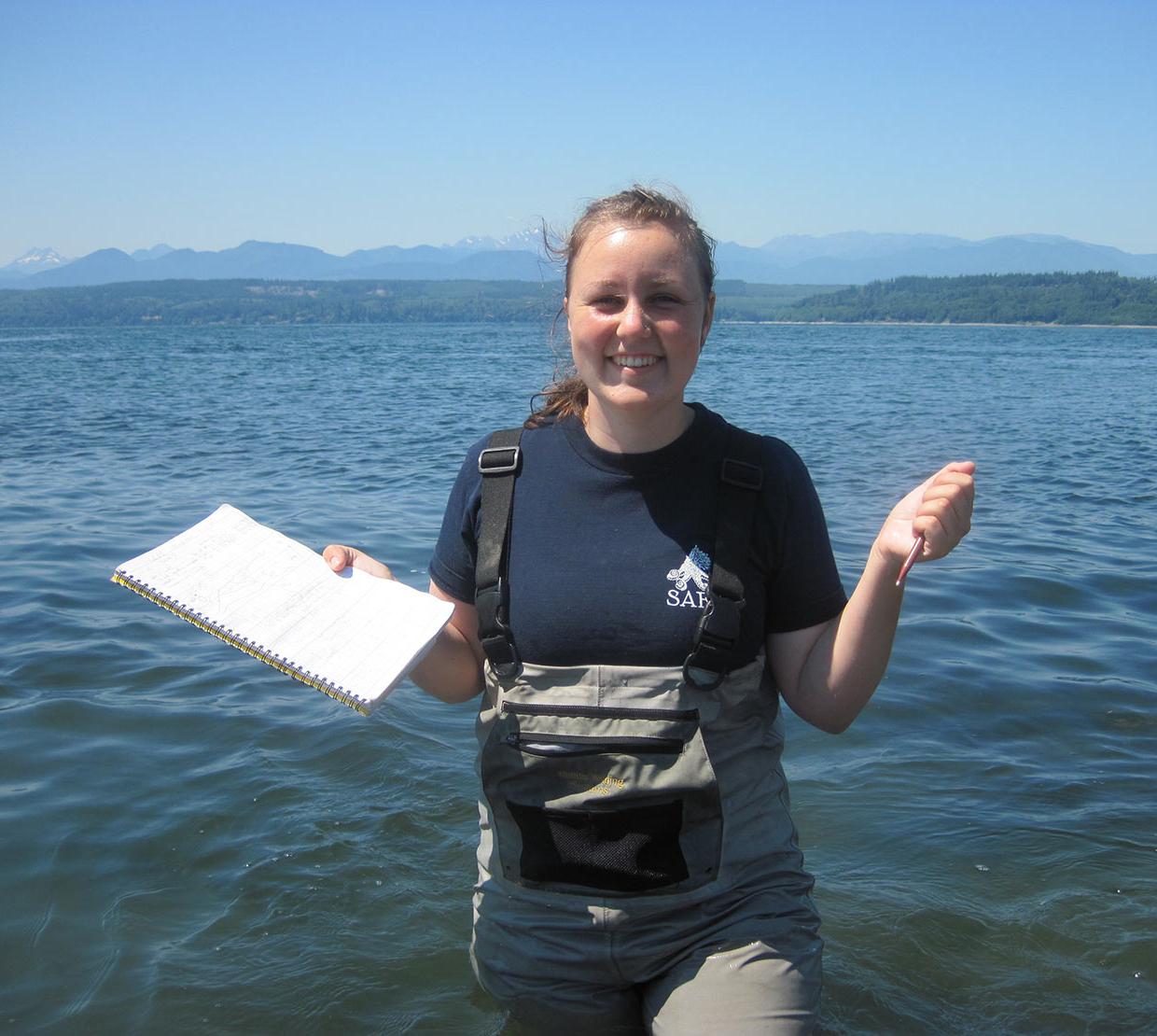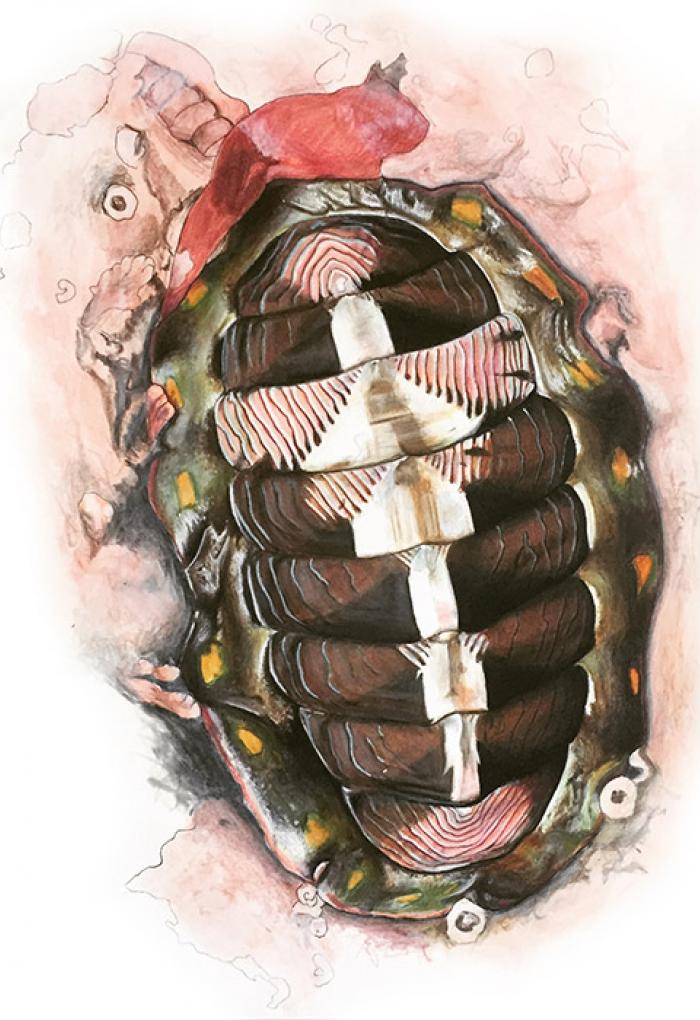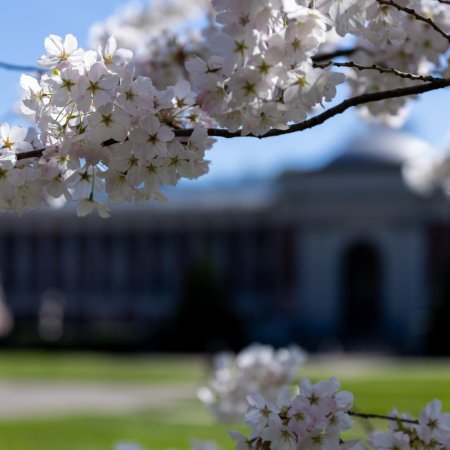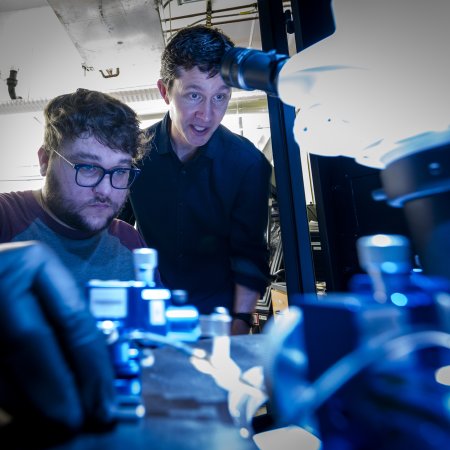A total of five science Ph.D. students have received prestigious National Science Foundation Graduate Research Fellowship Program (NSF GRFP) awards in 2016. Biochemistry and Biophysics student Nathan Waugh and Integrative Biology students Shannon Hennessey, Jack Koch, Zach Randall and Michael Brawner are among 11 students at Oregon State to receive the NSF Graduate Research Fellowships this year.
In 2016, NSF received nearly 17,000 applications and offered 2,000 awards.
Established in 1952, the NSF GRF Program is the oldest graduate fellowship of its kind, and recognizes and supports outstanding master’s and doctoral students in STEM disciplines at accredited U.S. institutions.
The GRFP provides three years of financial support within a five-year fellowship period for graduate study that leads to a research-based master’s or doctoral degree in science or engineering. Students receive a $34,000 annual stipend and $12,000 cost-of-education allowance, which goes to the graduate institution.
The award-winning projects in science cover an impressive gamut of topics, including biomolecular healthcare research, an invertebrate ecological habitat study, the effects of ocean acidification on marine organisms and semi-aquatic predator-prey interactions.
But more importantly, these NSF awards demonstrates that the College’s newest fellows are outstanding young scientists with the potential to contribute significantly to research, teaching, scientific innovations, and to make a difference in the world.
From high school drop out to magna cum laude college graduate and NSF Graduate Research Fellow
Nathan Waugh has had an unusual journey to the NSF graduate fellowship. Uninspired by school, he dropped out of high school at the age of 16 and worked in a number of low-paying, temporary jobs in the food and housing sectors. Six years later, Nathan found himself living a mile away from Weber State University in Ogden, Utah.
On a whim, he enrolled in night classes at the college and was immediately surprised by how much he enjoyed them.
“Compared to high school, it was a night and day difference. Before I knew it, college was my focus,” he said. “I [realized I] had to get out of these dead-end jobs and do something else with my life.”
Completely unfamiliar with academic life and untutored in the complexities of choosing a major, Nathan picked philosophy because he “enjoyed thinking.” But when he took an introduction to physics course as a general education requirement, he ended up falling in love with the subject and excelling in it.
“So many of my 18-year-old classmates were uninterested in the material, recollected Nathan. “I was lucky I took time off because I had the time to realize what was important.”
At the end of the semester, the professor asked Nathan if he was interested in majoring in physics. Initially reluctant because he dreaded mathematics, Nathan eventually switched to physics.
Nathan dove into his physics classes and before he knew it, he was also taking many math classes. “
“At one point I said to myself, ‘Wait a minute, I am not scared of this math problem I am doing and I am enjoying it!’ ” Nathan graduated magna cum laude with a double major in physics and mathematics.
Yearning to go to graduate school to pursue medical or biotechnology research that would “impact people’s lives,” Nathan applied to several physics, bioengineering and biochemistry programs. One day while exploring the physics program at OSU, he stumbled upon a link to the biochemistry and biophysics department.
“I looked at the professors’ research and was just amazed by the variety of things taught here. I had to apply.” His application was successful. “OSU was the first program that contacted me with an offer of admission,” added Nathan.
Nathan had taken the odd biology class as an undergraduate student so there was plenty of catching up to do before beginning his graduate classes. Over the summer, he spent hours studying organic chemistry and biochemistry and biophysics textbooks.
Waugh describes his current studies as an ongoing encounter with a “waterfall of information,” and candidly recounts his moments of frustration. During his first lab rotation, he saw a micro-pipette for the first time, a common piece of equipment that undergraduate biochemistry students used in their first term. On biochemistry tests, Nathan would realize he had not memorized enough because that’s not how he had studied as a physics student.
“Clearly, I had to learn a different study technique.”
The swift arc from new biochemistry student to NSF graduate fellow demonstrates Nathan’s work ethic and determination as well as an impressive capacity to bring together different fields of study.
“By the time I submitted my NSF proposal, I understood really well what was going on from a biochemical perspective. Then my background in physics helped too because I was able to tie things together in a mechanistic way,” observed Nathan. “Actually, one of the reviewers wrote how he was impressed with the interweaving of disciplines for the project.”
Inspired by his professor Ryan Mehl’s ideas on binding unnatural amino acids to surfaces, Waugh spent weeks and months reading Mehl’s articles to learn the biochemistry behind improving surface attachment of unnatural amino acids.
His award-winning NSF proposal, “Binding artificial amino acids to surfaces” will tackle the problem of improper adsorption of proteins to non-biological surfaces that results in insufficient experimental results, wastage of surface area and the risk of cross-contamination.
Nathan will also explore the possibilities of improving surface attachment by harnessing different models of unnatural amino acids. His goal is to investigate the treatment of proteins with different amino acids to determine how amino acids can best influence the binding affinity of proteins to macromolecular surfaces. Enhancing the binding quality of enzymes and proteins will maximize the efficiency of existing technology and make it cheaper and safer to use.
“The way it works is you have a solution that has a protein of interest in it. And you flow that solution on the surface or the surface soaks in that solution, and the protein adheres to the surface in all kinds of mutations,” explained Nathan.
“For instance, if the protein is U-shaped it is facing down the surface and can’t access the substrate. Then you have a lot of surface being wasted because there isn’t much activity there.”
Nathan said his research could potentially improve the quality of enzyme-based blood glucose sensors for diabetes patients. Reducing the area of the enzyme coated sensor that penetrates the skin to measure glucose levels can minimize scarring, discomfort, lead to longer battery life of the device and to a smaller, easy-to-carry size.
“By improving the method of attachment, you can use technologies to a degree of efficiency that is not possible with existing methods.”
Despite a flurry of adjustments, Nathan revels in his role as a graduate researcher in biochemistry. Embracing and excelling in a newfound discipline is a remarkable achievement, and students like Nathan are evidence of how experience broadens the horizons of scientific knowledge.
“Overall, I would describe it as a really solid, satisfying sense of journey from one field to another with all the benefits of understanding things in between,” said Nathan.
“I think it’s the most intellectually stimulating thing I have ever done.”
A love of snails
Shannon Hennessey, who is also an ARCS Foundation of Portland Fellow, has always enjoyed exploring and learning about marine ecosystems. Growing up on Vashon Island near Seattle, Shannon spent many happy hours swimming, fishing and observing marine organisms.
“My parents always emphasized getting outside. I loved going to the beach and seeing what I could find.”
Shannon studied aquatic and fishery sciences at the University of Washington, worked on “very cool research projects” involving eelgrass habitats at the Northwest Fisheries Science Center after college, and made her way as a Ph.D. student to Mark Novak’s lab in the Department of Integrative Biology in the College of Science. The Novak lab studies species’ interactions and their impact on ecological communities, particularly on marine and freshwater systems.
“My professors in Seattle highly recommended the marine science program at Oregon State. Mark’s lab and research stood out because he has a really unique way of combining experimental observations in the field with mathematical and statistical modeling,” said Shannon.
Shannon shifted her focus from fish to marine vertebrates in graduate school. “It is because I have visited intertidal zones and seen marine vertebrates up close, interacting with their habitats and other organisms. They don’t run away when you get close,” she laughed.
Shannon’s research focuses on predatory snails in intertidal systems and their environmental influences.
“Snails are fascinating. As a population they eat a lot of different organisms, but some individual snails can specialize in a certain prey or preys—one might eat only barnacles or one might eat no more than three different things.”
Shannon will study different snail populations (the genus includes thousands of species of sea snails and freshwater snails) of the same species along the Oregon coast under different environmental regimes, such as sheltered bays and open seas.
The objective is to understand and “untangle” the mechanisms that maintain variability in their diet.
“I will probe the environmental factor that contributed to their diet variability and to what they are eating,” Shannon pointed out.
“There are many cool things about this project. It is very interesting to find out what is going on from an ecological perspective. And, intertidal systems in general are easy to manipulate experimentally as it is a very dynamic environment. You can actually do a lot of experimental manipulations with snails that you cannot do with larger predators.”
Shannon plans to tag individual snails this summer and follow it through the season to track how far it is moving and what it is eating over successive feeding bouts. She hopes to learn what the range and variations in snails’ diets can tell us about their adaptation to environmental changes.





